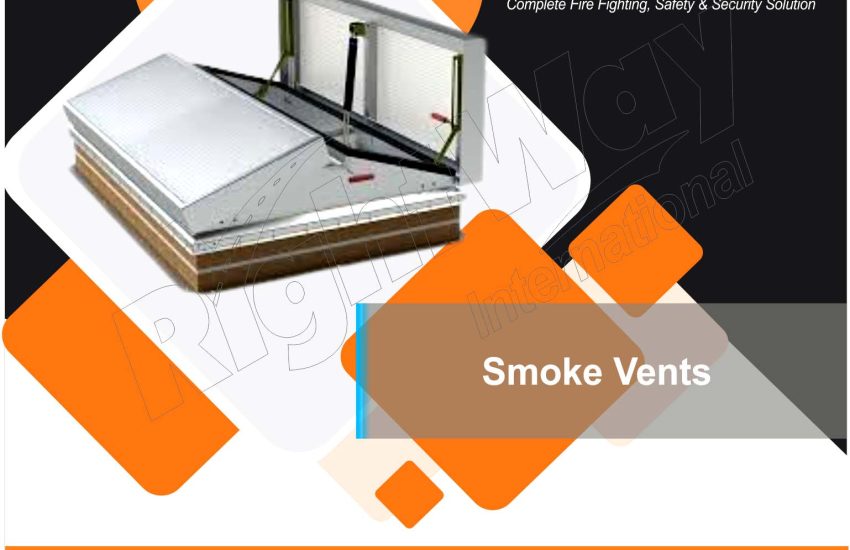Smoke Vents are critical components in fire safety systems designed to manage and mitigate smoke during a fire. Their primary function is to provide a means for smoke and hot gases to escape from a building, improving visibility and air quality, and aiding in the safe evacuation of occupants. This article explores the purpose of smoke vent, the different types available, and best practices for their installation and maintenance.
Purpose of Smoke Vents
- Smoke and Heat Extraction: The primary purpose of smoke vent is to facilitate the removal of smoke and hot gases from a building during a fire. By doing so, they help to maintain a clearer, safer environment for occupants and emergency responders.
- Visibility and Safety: By clearing smoke from the building, smoke vent improve visibility for evacuation and firefighting efforts, reducing the risk of accidents and injuries.
- Temperature Control: Smoke vent help manage the temperature within a building by allowing hot gases to escape, which can prevent structural damage and reduce the risk of fire spread.
- Protecting Escape Routes: Properly designed smoke vent ensure that escape routes, such as stairwells and hallways, remain clear of smoke, facilitating safe evacuation for building occupants.
Types of Smoke Vents
- Natural Smoke Vents: These vent rely on natural buoyancy to expel smoke. They typically include roof-mounted openings or skylights that allow hot smoke and gases to rise and escape. Natural smoke vent are often used in conjunction with smoke shafts to direct smoke out of the building.
- Mechanical Smoke Vents: Mechanical smoke vent use fans and other mechanical systems to actively expel smoke from a building. These systems can be more effective in controlling smoke in larger or more complex buildings where natural vent may be insufficient.
- Automatic Smoke Vents: These vent are equipped with sensors that detect smoke and automatically open to release it. Automatic smoke vent can be integrated with a building’s fire alarm system to provide prompt and efficient smoke control.
- Manual Smoke Vents: Manual smoke vent require human intervention to open and close. These are often used in smaller buildings or as a supplementary measure to other smoke vent systems.
Key Features of Smoke Vents
- Size and Capacity: The size and capacity of smoke vents should be sufficient to handle the volume of smoke generated by a fire. Larger vents are generally required for buildings with larger floor areas or higher fire loads.
- Location and Placement: Strategic placement of smoke vent is crucial to their effectiveness. They should be located in areas where smoke is likely to accumulate, such as at the highest points of a building or along escape routes.
- Construction and Material: Smoke vent must be constructed from materials that can withstand high temperatures and corrosive smoke. Common materials include fire-resistant metals and high-temperature glass.
- Integration with Building Systems: Smoke vent should be integrated with a building’s overall fire safety system, including fire alarms and sprinklers, to provide a coordinated response to fire emergencies.
Installation Best Practices
- Compliance with Regulations: Ensure that smoke vents comply with local building codes and fire safety regulations. Codes often specify the minimum requirements for size, placement, and operation of smoke vents.
- Professional Installation: Engage experienced professionals for the installation of smoke vent to ensure proper setup and integration with other fire safety systems. Incorrect installation can significantly reduce the effectiveness of smoke vent.
- Regular Maintenance and Testing: Conduct regular maintenance and testing of smoke vent to ensure they are operational when needed. This includes checking for blockages, verifying that automatic systems are functioning, and ensuring that manual vents can be easily operated.
- Proper Training: Provide training for building occupants and staff on the operation and maintenance of smoke vent. This ensures that everyone is aware of how to use the vents effectively in the event of a fire.
- Integration with Fire Safety Plan: Incorporate smoke vent into the building’s fire safety plan, including evacuation routes and emergency procedures. Ensure that all safety measures work in concert to provide the best possible protection.
Conclusion
Smoke vents are a crucial element of fire safety systems, designed to manage smoke and hot gases during a fire, thereby improving visibility, safety, and temperature control within a building. Understanding the different types of smoke vent, their key features, and best practices for installation and maintenance is essential for ensuring effective smoke management and enhancing overall building safety. By adhering to these guidelines, property owners and managers can better protect occupants and safeguard their buildings in the event of a fire.


